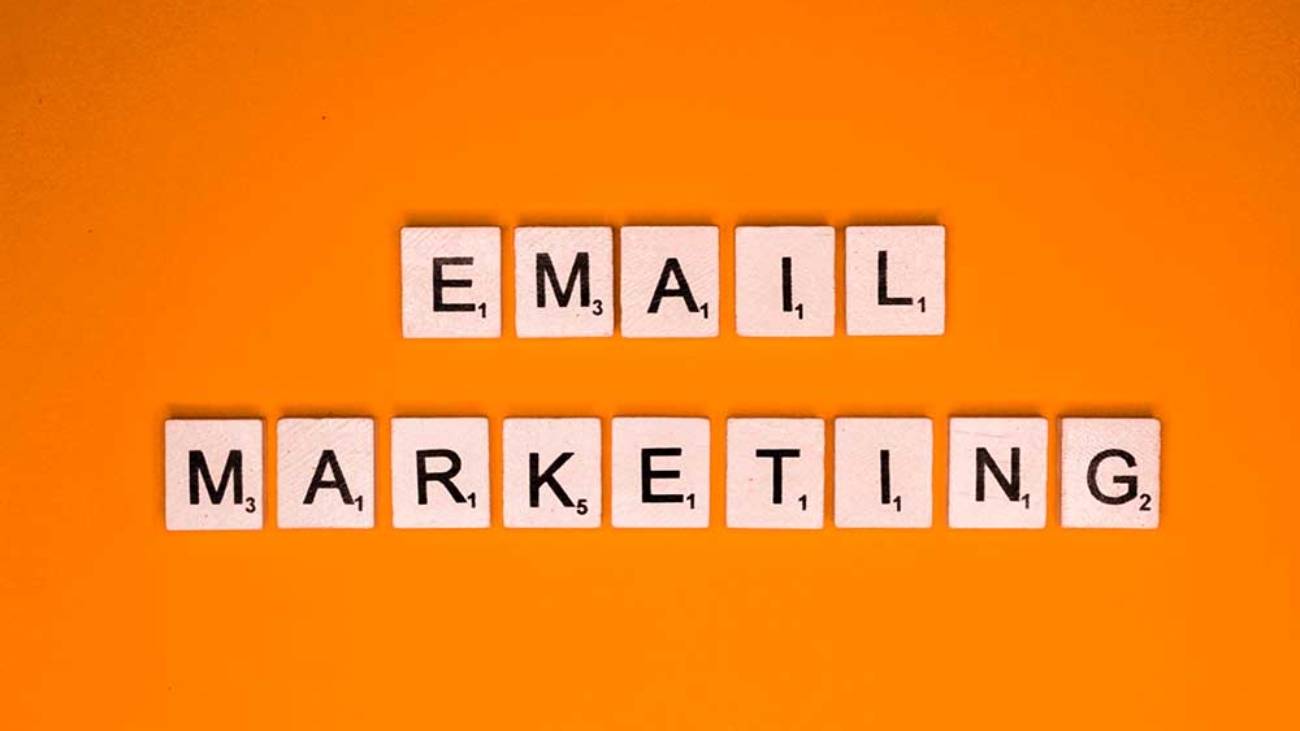Email marketing is still a powerful tool for generating sales and building client relationships in the quick-paced world of digital marketing. With inboxes overflowing with promotional messages, businesses need to come up with creative ways to draw customers in and encourage conversions.
Email marketers can now send subscribers personalized, pertinent, and engaging messages with the help of targeted content, a tactical approach.
First and foremost, effective email marketing begins with building a quality email list. Focus on growing your subscriber base organically by offering valuable content, incentives, and exclusive offers to entice visitors to sign up for your emails. Segment your email list based on demographics, interests, and purchase history to deliver personalized messaging that resonates with each subscriber.
According to research by Campaign Monitor, segmented email campaigns result in a 760% increase in revenue compared to non-segmented campaigns (Campaign Monitor) In this article, we’ll explore how targeted content can unlock the sales potential of email marketing and drive revenue growth for businesses.
Understanding Targeted Content Email Marketing
What is Targeted Content?
In email marketing, targeted content is creating messages that are suited to the unique interests, tastes, and habits of each subscriber. Using targeted content, you can segment your audience and provide pertinent content to each group instead of sending generic emails to your whole list. With this tailored approach, you can be sure that every subscriber gets content that speaks to their own needs and goals. Smith, B. (2021)
The Power of Personalization
Personalization is the key component of targeted content. Businesses may design highly personalized email campaigns that speak to each recipient specifically by utilizing data such as demographics, past purchase history, browsing behaviour, and engagement patterns. Personalization fosters rapport, trust, and loyalty with your audience. Examples of this include calling the recipient by name, making product recommendations based on previous purchases, and sending tailored promotions.
Key Elements of Targeted Content
Segmentation: Using parameters like location, purchase history, demographics, and engagement level, divide your email list into discrete groups. This enables you to customize your content to each segment’s unique needs and interests.
Dynamic Content: You can alter the content of your emails according to the profile or actions of the recipient by using dynamic content blocks. Dynamic content adds relevance and value to your emails by
highlighting products that are related to previous purchases or emphasizing personalized recommendations.
Behavioural triggers: to automate the delivery of content that is specifically tailored to a given action or
event. For instance, start a re-engagement campaign for inactive subscribers or send a follow-up email to
subscribers who have abandoned their shopping carts.
Personalized Recommendations: Using machine learning algorithms and data analytics, provide individualized product recommendations based on the browsing habits and preferences of individual subscribers. This raises the possibility of conversion while also improving the shopping experience.
Enhanced Engagement: Tailored emails have a higher chance of grabbing subscribers’ attention and getting them to act if they contain content that speaks directly to their interests and needs. Targeted content increases engagement rates everywhere, whether the user opens an email, clicks on a link, or completes a transaction.
Increased Conversion Rates: By delivering messages that correspond with the recipient’s stage in the customer journey, targeted content enhances conversion rates significantly. Targeted emails are more likely to increase conversions and produce outcomes for businesses, whether they include a customized call-to-action, personalized product recommendation, or tailored promotion.
Improved Customer Experience: By delivering pertinent and helpful messages that cater to the recipient’s needs and preferences, targeted content improves the overall customer experience.
Targeted emails contribute to the development of long-term relationships, loyalty, and trust with customers by demonstrating your understanding and appreciation of your subscribers.
Increased ROI: By optimizing the impact of every email campaign, targeted content in email marketing increases ROI. Businesses can get better results with less work and money by sending fewer, more focused emails, which will increase the return on investment (ROI) of their marketing initiatives.
Best Practices for Targeted Content
- Segment Your Audience: One of the foundational best practices for targeted content in email marketing is audience segmentation. Rather than sending generic emails to a broad audience, segment your email list based on demographics, behaviours, preferences, and engagement history. By dividing your audience into smaller, more targeted segments, you can deliver content that is highly relevant and tailored to the specific interests and needs of each group.
- Personalize Your Messages: Personalization is key to the success of targeted content in email marketing. Use dynamic content and merge tags to personalize your messages with the recipient’s name, location, past purchases, or other relevant information. Personalized emails are more likely to capture the recipient’s attention and prompt them to engage with the content, leading to higher open and click-through rates.
- Leverage Behavioral Data: Utilize behavioural data to inform your email marketing strategy and deliver targeted content that aligns with the recipient’s actions and interests. Track user interactions such as website visits, email opens, clicks, and purchases to gain insights into their preferences and behaviours. Use this data to segment your audience, personalize your messages, and tailor your content to their specific needs and preferences.
- Test and Iterate: Continuous testing and optimization are essential for maximizing the effectiveness of targeted content in email marketing. Experiment with different subject lines, content formats, calls-to-action, and send times to determine what resonates most with your audience. Analyze key metrics such as open rates, click-through rates, and conversion rates to identify areas for improvement and refine your approach over time.
- A/B Test Your Content: Experiment with different subject lines, email designs, and content formats to identify what resonates best with your audience and drives the highest engagement and conversions.
The Disadvantages of not using Targeted Content
The lack of targeted content in email marketing can have significant drawbacks, undermining the effectiveness of campaigns and hindering overall marketing success. Moving on, we’ll explore the disadvantages of not using targeted content in email marketing and the impact it can have on businesses.
- Low Engagement Rates: One of the primary disadvantages of not using targeted content in email marketing is low engagement rates. Generic emails not tailored to individual recipients’ interests, preferences, and behaviours are more likely to be ignored or deleted without being opened. As a result, businesses may experience low open rates, click-through rates, and overall engagement with their email campaigns, limiting their ability to connect with their audience and drive meaningful interactions.
- Decreased Conversion Rates: Another drawback of not using targeted content in email marketing is decreased conversion rates. When emails fail to deliver relevant and compelling content to recipients, they are less likely to take the desired action, whether it’s making a purchase, signing up for a webinar, or downloading a resource. As a result, businesses may experience lower conversion rates and reduced return on investment (ROI) from their email marketing efforts, impacting their bottom line and hindering business growth.
- Poor Customer Experience: The absence of targeted content in email marketing can lead to a poor customer experience. Recipients may feel inundated with irrelevant or uninteresting emails, leading to frustration, annoyance, and disengagement from the brand. This can damage the brand’s overall perception and erode customer trust and loyalty, making it more difficult to retain existing customers and acquire new ones in the future.
- Wasted Resources: Not using targeted content in email marketing can result in wasted business resources. Crafting and sending generic emails to a broad audience requires time, effort, and resources, yet yields subpar results in terms of engagement and conversions. Businesses may find themselves investing significant resources into email marketing campaigns that fail to deliver meaningful outcomes, leading to inefficiency and wasted marketing spending.
- Missed Opportunities for Growth: Ultimately, the biggest disadvantage of not using targeted content in email marketing is missed growth opportunities. Without personalized and relevant content, businesses miss out on the chance to connect with their audience, drive engagement, and convert leads into customers. This can impede business growth and hinder the achievement of marketing objectives, limiting the overall success and effectiveness of email marketing efforts.
The disadvantages of not using targeted content in email marketing are clear and significant. From low engagement rates and decreased conversion rates to poor customer experience and wasted resources, businesses that fail to adopt targeted content strategies risk falling behind their competitors and missing out on valuable opportunities to connect with their audience.
The Future of Targeted Content in Email Marketing
Looking ahead, the future of targeted content in email marketing holds immense promise, with advancements in technology, data analytics, and automation reshaping the way businesses connect with their customers. Here, we’ll explore the future of targeted content in email marketing and the key trends shaping its evolution
Hyper-Personalization: The capacity to provide highly customized content to every recipient based on their individual preferences, actions, and interactions is known as hyper-personalization, and it will be the future of targeted content in email marketing. Businesses can use granular insights to create personalized experiences that connect with their audience more deeply thanks to developments in data analytics and artificial intelligence (AI). With the help of hyper-personalization, businesses can deliver customized content at scale, increasing engagement and conversion rates. This includes personalized product recommendations, dynamic content blocks, real-time messaging, and predictive analytics.
Predictive Analytics: Another trend shaping the future of targeted content in email marketing is predictive analytics – the use of data-driven insights to anticipate customer behavior and preferences. By analyzing historical data, customer interactions, and market trends, businesses can predict future actions and tailor their email content accordingly. Whether it’s predicting product interests, timing of purchases, or preferred communication channels, predictive analytics enables businesses to deliver proactive and relevant content that anticipates the needs of their audience, driving higher engagement and ROI.
Interactive Content: The future of targeted content in email marketing will also see a rise in interactive content – content that invites recipients to engage and interact directly within the email itself. From interactive quizzes and polls to gamified experiences and live product demos, interactive content transforms passive email campaigns into immersive and engaging experiences that captivate recipients and drive higher levels of engagement. By encouraging interaction and participation, businesses can deepen customer relationships, gather valuable insights, and increase conversion rates.
Automation and AI: Automation and AI will play a pivotal role in the future of targeted content in email marketing, enabling businesses to deliver personalized and timely messages at scale. With AI-powered algorithms and machine learning models, businesses can automate the process of content creation, segmentation, and delivery, optimizing campaigns for maximum impact and efficiency. From automated email workflows and personalized drip campaigns to AI-driven content recommendations and predictive send times, automation and AI empower businesses to deliver targeted content seamlessly across the customer journey, driving higher engagement, conversions, and ROI.
Conclusion
Targeted content is a game-changer in email marketing, empowering businesses to deliver personalized, relevant, and impactful messages to their audience. By leveraging data-driven insights to segment their audience and deliver tailored content, businesses can unlock sales potential, drive revenue growth, and nurture long-term customer relationships. In today’s competitive landscape, targeted content is not just a strategy – it’s a necessity for businesses looking to stay ahead of the curve and achieve sustainable success in the digital age. As technology continues to evolve and consumer expectations shift, businesses must embrace these trends and innovations to stay ahead of the curve and unlock the full potential of targeted content in email marketing. By leveraging the power of targeted content, businesses can create memorable and impactful email campaigns that drive success and growth in the digital age. In today’s competitive landscape, personalized and relevant content is essential for driving success in email marketing and achieving meaningful results for businesses of all sizes. By embracing targeted content strategies, businesses can enhance engagement, improve conversions, and foster long-term relationships with their audience, ultimately driving sustainable growth and success in the digital age.


